#Sustainable Foods
Explore tagged Tumblr posts
Text
On this #World Food Day, let EFT be a part of safeguarding the hope of seeds and global food supply. With professional technology, we are dedicated to building a better life and better future, promoting food security and sustainable agriculture for all!
Learn more: https://www.effort-tech.com/en


#agricultural drone#drone tech#drone for farming#drone spreader#spraying drone#drone#world food day#food safety#agriculture safety#food heroes#food security#green food#EFT drone#drone solution#Right To Food#enough crops#sustainable foods#innovation#Protect seed#green Agri#eft drone tech#guard crops#farming#harvest#Zero hunger
1 note
·
View note
Text
What Are Sustainable Food Sources

Sustainable food supplies are critical for protecting the environment and guaranteeing a sustainable future. They are environmentally friendly, socially ethical, and economically feasible methods of producing food. Implementing sustainable agricultural practices helps to offset the environmental damage caused by traditional agriculture, such as lowering greenhouse gas emissions and conserving water. Sustainable food sources prioritize organic farming, biodiversity conservation, energy efficiency, and waste reduction.
Organic farming, which does not use synthetic pesticides or genetically modified organisms (GMOs), permaculture, which integrates food production into natural landscapes, and hydroponics, a soilless growing method that uses less water and allows for controlled year-round growing, are all examples of sustainable food.
Sustainable food sources have significant environmental, health, and societal benefits. They help to mitigate climate change by lowering greenhouse gas emissions, conserving water, encouraging biodiversity, and enhancing soil health. In terms of health, sustainable food sources offer nutrient-dense, organic items devoid of contaminants because they avoid synthetic pesticides and fertilizers. From a societal standpoint, supporting local farmers and firms involved in sustainable food production benefits the local economy and supports fair trade.
Finally, embracing sustainable food sources is critical for environmental preservation, healthier food options, and community support. Individuals can help to ensure a more sustainable future for future generations by using sustainable farming techniques and purchasing sustainable food items.
0 notes
Text
Exploring Sustainability in the Food Industry: A Review of “You Can’t Market Manure at Lunchtime”
In today’s world, sustainability isn’t just a buzzword; it’s a necessity. In her insightful book, “You Can’t Market Manure at Lunchtime,” Maisie Ganzler, Chief Strategy and Brand Officer of Bon Appétit Management Company, delves deep into the complexities of sustainability within the food industry. Through a combination of personal experiences, interviews with industry legends, and practical…

View On WordPress
#Book Review#food industry#Greenwashing#Maisie Ganzler#Sustainability#Sustainability Practices#Sustainable Foods#You Can’t Market Manure at Lunchtime
0 notes
Text
Ever wondered what it takes to feed over 75,000 marine animals at Monterey Bay Aquarium? 🌿🐟
Step into our bustling food room where Senior Aquarist Kacey Kurimura shows us how she and her team create customized, sustainable diets for our resident animals every day!
From nutrient-dense shakes to fresh squid, shrimp, and clams, read our latest web story to learn what goes into making these fin-tastic meals!
2K notes
·
View notes
Text
"In response to last year’s record-breaking heat due to El Niño and impacts from climate change, Indigenous Zenù farmers in Colombia are trying to revive the cultivation of traditional climate-resilient seeds and agroecology systems.
One traditional farming system combines farming with fishing: locals fish during the rainy season when water levels are high, and farm during the dry season on the fertile soils left by the receding water.
Locals and ecologists say conflicts over land with surrounding plantation owners, cattle ranchers and mines are also worsening the impacts of the climate crisis.
To protect their land, the Zenù reserve, which is today surrounded by monoculture plantations, was in 2005 declared the first Colombian territory free from GMOs.
...
In the Zenù reserve, issues with the weather, climate or soil are spread by word of mouth between farmers, or on La Positiva 103.0, a community agroecology radio station. And what’s been on every farmer’s mind is last year’s record-breaking heat and droughts. Both of these were charged by the twin impacts of climate change and a newly developing El Niño, a naturally occurring warmer period that last occurred here in 2016, say climate scientists.
Experts from Colombia’s Institute of Hydrology, Meteorology and Environmental Studies say the impacts of El Niño will be felt in Colombia until April 2024, adding to farmers’ concerns. Other scientists forecast June to August may be even hotter than 2023, and the next five years could be the hottest on record. On Jan. 24, President Gustavo Petro said he will declare wildfires a natural disaster, following an increase in forest fires that scientists attribute to the effects of El Niño.
In the face of these changes, Zenù farmers are trying to revive traditional agricultural practices like ancestral seed conservation and a unique agroecology system.
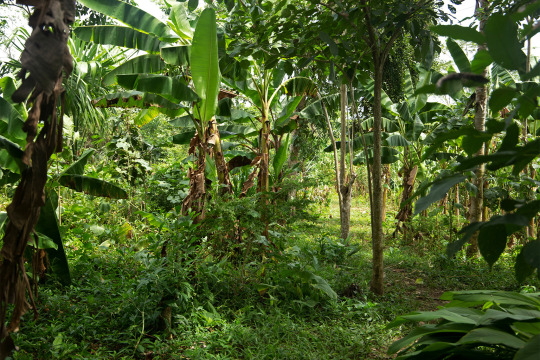
Pictured: Remberto Gil’s house is surrounded by an agroforestry system where turkeys and other animals graze under fruit trees such as maracuyá (Passiflora edulis), papaya (Carica papaya) and banana (Musa acuminata colla). Medicinal herbs like toronjil (Melissa officinalis) and tres bolas (Leonotis nepetifolia), and bushes like ají (Capsicum baccatum), yam and frijol diablito (beans) are part of the undergrowth. Image by Monica Pelliccia for Mongabay.
“Climate change is scary due to the possibility of food scarcity,” says Rodrigo Hernandez, a local authority with the Santa Isabel community. “Our ancestral seeds offer a solution as more resistant to climate change.”
Based on their experience, farmers say their ancestral seed varieties are more resistant to high temperatures compared to the imported varieties and cultivars they currently use. These ancestral varieties have adapted to the region’s ecosystem and require less water, they tell Mongabay. According to a report by local organization Grupo Semillas and development foundation SWISSAID, indigenous corn varieties like blaquito are more resistant to the heat, cariaco tolerates drought easily, and negrito is very resistant to high temperatures.
The Zenù diet still incorporates the traditional diversity of seeds, plant varieties and animals they consume, though they too are threatened by climate change: from fish recipes made from bocachico (Prochilodus magdalenae), and reptiles like the babilla or spectacled caiman (Caiman crocodilus), to different corn varieties to prepare arepas (cornmeal cakes), liquor, cheeses and soups.
“The most important challenge we have now is to save ancient species and involve new generations in ancestral practice,” says Sonia Rocha Marquez, a professor of social sciences at Sinù University in the city of Montería.
...[Despite] land scarcity, Negrete says communities are developing important projects to protect their traditional food systems. Farmers and seed custodians, like Gil, are working with the Association of Organic Agriculture and Livestock Producers (ASPROAL) and their Communitarian Seed House (Casa Comunitaria de Semillas Criollas y Nativas)...
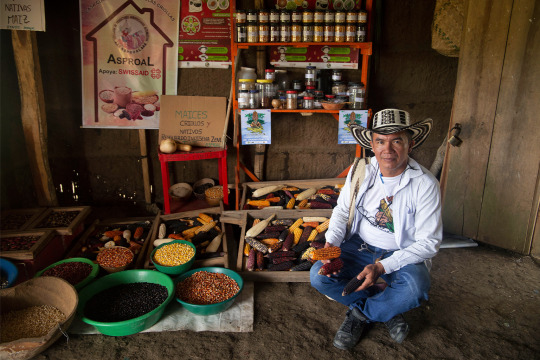
Pictured: Remberto Gil is a seed guardian and farmer who works at the Communitarian Seed House, where the ASPROL association stores 32 seeds of rare or almost extinct species. Image by Monica Pelliccia for Mongabay.
Located near Gil’s house, the seed bank hosts a rainbow of 12 corn varieties, from glistening black to blue to light pink to purple and even white. There are also jars of seeds for local varieties of beans, eggplants, pumpkins and aromatic herbs, some stored in refrigerators. All are ancient varieties shared between local families.
Outside the seed bank is a terrace where chickens and turkeys graze under an agroforestry system for farmers to emulate: local varieties of passion fruit, papaya and banana trees grow above bushes of ají peppers and beans. Traditional medicinal herbs like toronjil or lemon balm (Melissa officinalis) form part of the undergrowth.
Today, 25 families are involved in sharing, storing and commercializing the seeds of 32 rare or almost-extinct varieties.
“When I was a kid, my father brought me to the farm to participate in recovering the land,” says Nilvadys Arrieta, 56, a farmer member of ASPROAL. “Now, I still act with the same collective thinking that moves what we are doing.”
“Working together helps us to save, share more seeds, and sell at fair price [while] avoiding intermediaries and increasing families’ incomes,” Gil says. “Last year, we sold 8 million seeds to organic restaurants in Bogotà and Medellín.”
So far, the 80% of the farmers families living in the Zenù reserve participate in both the agroecology and seed revival projects, he adds."
-via Mongabay, February 6, 2024
#indigenous#ecology#agroforestry#agriculture#traditional food systems#traditional medicine#sustainable agriculture#zenu#indigenous peoples#farming#colombia#indigenous land#traditional knowledge#seeds#corn#sustainability#botany#plant biology#good news#hope#climate action#climate change#climate resilience#agroecology#food sovereignty
1K notes
·
View notes
Text
is it the devil talking when I see hibachis for sale at the local knife (and fancy kitchen gear) shop
405 notes
·
View notes
Text
I need vegans to stop being like “what if it was a dog or cat” as if it is some sort of ‘gotcha.’ It just comes off as attempts to weaponize on xenophobia.
While I agree that there is no inherent moral difference between slaughtering a dog or pig for meat, I lean in the opposite direction than what they’re trying to argue with this comparison. I don’t think there is anything inherently wrong with eating any of these species. If they’re raised for meat (and not stolen pets or whatever) it’s no different than other food animals.
Like in some places horse or guinea pig meat is common, and in other places pig or cow meat is taboo. I get that sometimes comments like “what if it was a dog” can be a genuine attempt to shed light on the double standard in what’s acceptable versus taboo in one culture. To point out that it’s morally equivalent to eat either animal.
But like. My answer to that is that it’s morally okay to eat both. Just because one’s culture finds consumption of one taboo doesn’t mean that it’s inherently wrong in some way.
#farming carnivores for food is inefficient tbh#but that doesn’t mean it’s like inherently wrong to eat them#like personally I just thing 1) can this be sustaibly sources#2) how likely is this to get me sick#like there is probably no real sustainable way to eat turtles ngl
596 notes
·
View notes
Text
Proud to say I went out and did my civic duty voting for the important issues, like allowing people in my town to keep chickens on their property. EGG RIGHTS EGG RIGHTS EGG RIGHTS
#This is my favorite issue on the ballot#I hope it passes#Why shouldnt people be allowed their chickens#Food sustainability ftw!#Election things#River rambles
247 notes
·
View notes
Text
Every once in a while I’ll see some posts about everyone should become vegan in order to help the environment. And that… sounds kinda rude. I’m sure they don’t mean to come off that way but like, humans are omnivores. Yes there are people who won’t have any animal products be it meat or otherwise either due to personal beliefs or because their body physically cannot handle it, and that’s okay! You don’t have to change your diet to include those products if you don’t want to or you physically can’t.
But there’s indigenous communities that hunt and farm animals sustainably and have been doing so for generations. And these animals are a primary source of food for them. Look to the bison of North America. The settlers nearly caused an extinction as a part of a genocide. Because once the Bison were gone it caused an even sharper decline of the indigenous population. Now thankfully Bison did not go extinct and are actively being shared with other groups across America.
Now if we look outside of indigenous communities we have people who are doing sustainable farming as well as hunting. We have hunting seasons for a reason, mostly because we killed a lot of the predators. As any hunter and they will tell you how bad the deer population can get. (Also America has this whole thing about bird feathers and bird hunting, like it was bad until they laid down some laws. People went absolutely nuts on having feathers be a part of fashion like holy cow.)
We’re slowly getting better with having gardens and vertical farms within cities, and there’s some laws on being able to have a chicken or two at your house or what-have-you in the city for some eggs. (Or maybe some quails since they’re smaller than chickens it’s something that you’d might have to check in your area.) Maybe you would be able to raise some honey bees or rent them out because each honey tastes different from different plants. But ultimately when it comes to meat or cheese? Go to your local farmers. Go to farmers markets, meet with the people there, become friends, go actively check out their farm. See how the animal lives are and if the farmer is willing, talk to them about sustainable agriculture. See what they can change if they’re willing. Support indigenous communities and buy their food and products, especially if you’re close enough that the food won’t spoil on its way to you. (Like imagine living in Texas and you want whale meat from Alaska and you buy it from an indigenous community. I would imagine that would be pretty hard to get.)
Either way everything dies in the end. Do we shame scavengers for eating corpses they found before it could rot and spread disease? Do we shame the animals that hunt other animals to survive? Yes factory farming should no longer exist. So let’s give the animals the best life we can give them. If there’s babies born that the farmer doesn’t want, give them away to someone who wants them as a pet. Or someone who wants to raise them for something else. Not everyone can raise animals for their meat. I know I can’t I would get to emotionally attached. I’d only be able to raise them for their eggs and milk.
Yeah this was pretty much thrown together, and I just wanted to say my thoughts and throw them into the void. If you have some examples of sustainable farming/agriculture, please share them because while I got some stuff I posted from YouTube, I’m still interested to see what stuff I might’ve missed!
#solarpunk#farming#hunting#agriculture#sustainability#sustainable farming#sustainable agriculture#like Rewilding farm land is pretty interesting and trying to replicate an ecosystem with farm animals but also allowing wild animals#to make homes in the rewild farm land is pretty cool#and I have an absolute love for food/garden forests#and hydroponics have shown to be really great for communities in the winter time and they want to have fresh produce#all sorts of cool stuff
929 notes
·
View notes
Text
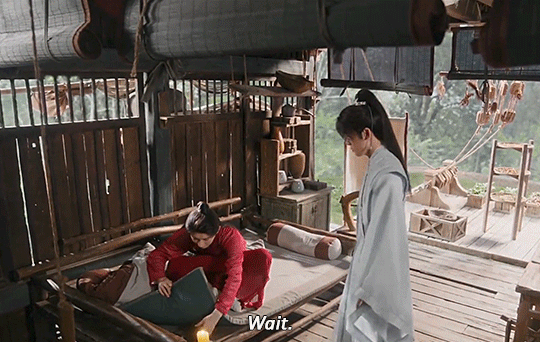

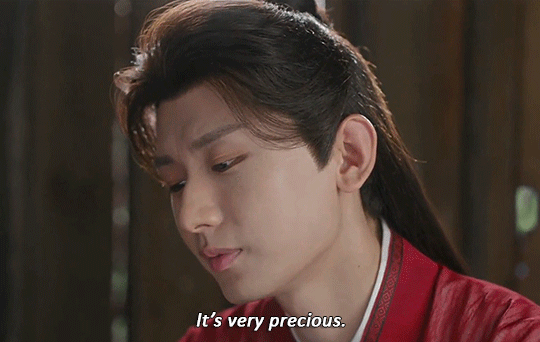
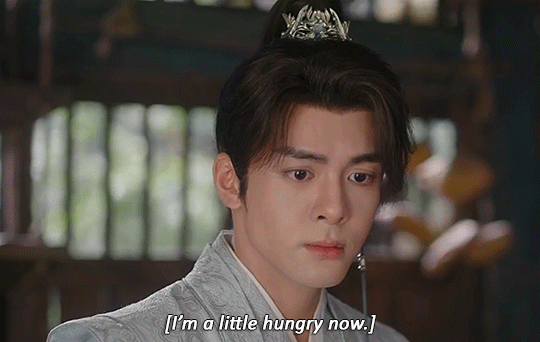

Li Lianhua + saying "I love you" without saying "I love you" (2/?)
Mysterious Lotus Casebook (2023)
#li lianhua#fang duobing#fanghua#mysterious lotus casebook#lhl#lian hua lou#llh's love language#more 'food as a love language' in this show because I think about Them and cannot rest#this scene is so layered it kills me#the 'recipes' are actually his yangzhouman instruction manual (tm)#which feels like a good one-to-one because food = life-sustaining as is yangzhouman#but in the context of the whole show and llh's whole character journey#we know that this is exactly the opposite: llh is essentially handing over his last will and testimony#but also in the context of the entire show and llh's character journey#we know that this is llh's way of telling fb he loves him#he loves fdb and will give him the thing he's always wanted...#...but only after his death#and it also shows that maybe he still thinks fdb's love is conditional#and only exists alongside lxy and not llh#anyway#I am Sad dot meme#my mlc gifs
331 notes
·
View notes
Text
What Are Sustainable Foods

The concept of sustainable food is gaining prominence as environmental concerns grow. Sustainable foods are those that are grown, processed, and consumed in ways that reduce environmental damage, benefit local communities, and ensure the long-term viability of our food systems. Choosing sustainable foods not only reduces greenhouse gas emissions, conserves water and land resources, and protects biodiversity, but it also promotes fair labor standards and benefits farmers and workers.
Sustainable foods take into account the entire food production chain, from farming methods to transportation and waste disposal. Making informed food choices can help us achieve a more sustainable future.
Sustainable foods are significant because they solve environmental issues including deforestation, soil degradation, water pollution, and biodiversity loss that are caused by unsustainable food production methods. By consuming sustainable foods, we can mitigate these negative repercussions and develop a more balanced relationship with our earth.
Sustainable foods have several key advantages, including the ability to reduce greenhouse gas emissions through practices such as organic and regenerative farming, conserve water and land resources through agroforestry and permaculture, and protect biodiversity by prioritizing crop diversity and habitat protection.
0 notes
Text
collecting them like Pokémon rn







(credits to deepinfatuation on tumblr n twitter)
#these are the only things that are sustaining me fr#screw food and water#also yes im keeping the OnBrand thing bcuz its fUnNy#i need this book so bad#tsats#the sun and the star#solangelo#solangelo book#nico di angelo#will solace#pjo#percy jackson#tsats spoilers
3K notes
·
View notes
Text
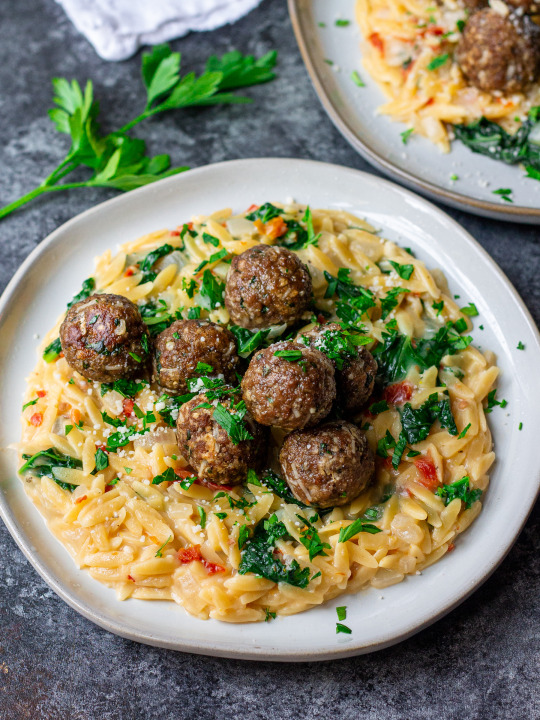
30-Minute Herby Meatballs With Creamy Kale Orzo
#eatfigsnotpigs#italian#dinner#savoury#meatballs#orzo#kale#vegan#vegetarian#food#recipe#recipes#climate change#global warming#sustainability#environment#environmentalism#climate action#climate crisis
223 notes
·
View notes
Text
FOOD, WATER, HOUSING, HEALTHCARE AND EDUCATION ARE BASIC FUNDAMENTAL HUMAN RIGHTS THAT SHOULD ALWAYS BE FREE!!!
#they should never have been monetised to begin with#p#hopecore#hopepunk#solarpunk#peaceful revolution#greenhorizon#anti capitalism#climate change solutions#naturecore#forestcore#lunarpunk#human rights#social justice#education#university#students#food security#food sovereignty#anti fascism#people and planet first#politics#news#world news#sustainability#housing crisis#homelessness#poverty#classism#social equity
179 notes
·
View notes
Text
The Surucuá community in the state of Pará is the first to receive an Amazonian Creative Laboratory, a compact mobile biofactory designed to help kick-start the Amazon’s bioeconomy.
Instead of simply harvesting forest-grown crops, traditional communities in the Amazon Rainforest can use the biofactories to process, package and sell bean-to-bar chocolate and similar products at premium prices.
Having a livelihood coming directly from the forest encourages communities to stay there and protect it rather than engaging in harmful economic activities in the Amazon.
The project is in its early stages, but it demonstrates what the Amazon’s bioeconomy could look like: an economic engine that experts estimate could generate at least $8 billion per year.
In a tent in the Surucuá community in the Brazilian Amazonian state of Pará, Jhanne Franco teaches 15 local adults how to make chocolate from scratch using small-scale machines instead of grinding the cacao beans by hand. As a chocolatier from another Amazonian state, Rondônia, Franco isn’t just an expert in cocoa production, but proof that the bean-to-bar concept can work in the Amazon Rainforest.
“[Here] is where we develop students’ ideas,” she says, gesturing to the classroom set up in a clearing in the world’s greatest rainforest. “I’m not here to give them a prescription. I want to teach them why things happen in chocolate making, so they can create their own recipes,” Franco tells Mongabay.
The training program is part of a concept developed by the nonprofit Amazônia 4.0 Institute, designed to protect the Amazon Rainforest. It was conceived in 2017 when two Brazilian scientists, brothers Carlos and Ismael Nobre, started thinking of ways to prevent the Amazon from reaching its impending “tipping point,” when deforestation turns the rainforest into a dry savanna.
Their solution is to build a decentralized bioeconomy rather than seeing the Amazon as a commodity provider for industries elsewhere. Investments would be made in sustainable, forest-grown crops such as cacao, cupuaçu and açaí, rather than cattle and soy, for which vast swaths of the forest have already been cleared. The profits would stay within local communities.
A study by the World Resources Institute (WRI) and the New Climate Economy, published in June 2023, analyzed 13 primary products from the Amazon, including cacao and cupuaçu, and concluded that even this small sample of products could grow the bioeconomy’s GDP by at least $8 billion per year.
To add value to these forest-grown raw materials requires some industrialization, leading to the creation of the Amazonian Creative Laboratories (LCA). These are compact, mobile and sustainable biofactories that incorporate industrial automation and artificial intelligence into the chocolate production process, allowing traditional communities to not only harvest crops, but also process, package and sell the finished products at premium prices.
The logic is simple: without an attractive income, people may be forced to sell or use their land for cattle ranching, soy plantations, or mining. On the other hand, if they can make a living from the forest, they have an incentive to stay there and protect it, becoming the Amazon’s guardians.
“The idea is to translate this biological and cultural wealth into economic activity that’s not exploitative or harmful,” Ismael Nobre tells Mongabay."
-via Mongabay News, January 2, 2024
#amazon#amazon rainforest#rainforest#chocolate#sustainability#ethical food#brazil#natural resources#good news#hope
286 notes
·
View notes
Text

I wanted to highlight this because I knew it would come up as SOON as I mention common milkweed (asclepias syriaca), which is a milkweed from the Eastern and Central US.
Indigenous peoples, respected ethnobotanists, and veteran foragers eat milkweed by the bucket! If other people knew how amazing of a plant it is – there is something edible and delicious about it at every stage of growth, it is very easy to plant / spread its seeds, and it grows almost like a weed – they would love and cherish it.
If more people were encouraged to utilize it, they would be less likely to get rid of it in their yards. They might even start growing a whole patch. It’s a sustainable food source. We would be helping its insect friends who are HARMLESS to our gardens but important for the environment.
It’s not like, say, ramps that are overharvested every year and have disappeared from huge stretches of land where they were once abundant. Ramps grown from seed take SEVEN years to mature. Milkweed grows and matures the same year.
People eating milkweed don’t contribute to monarch butterfly decline. The use of herbicides, Big Agro, cities just mowing down whatever the hell they want are to blame.
That said, it’s still important to forage in an ethical way. Never strip a plant of all its flowers, leaves, or fruit. Never harvest an entire patch of plants from a single area. Check for beneficial insects and leave them alone. If a native plant has gone to seed, help spread those around.
This is NOT a callout — this is important information that I want everyone to know. Eating milkweed will NOT harm the monarch butterflies.
Learn More:
The Forager’s Harvest
Learn Your Land
Part 1 | Common Milkweed
#foraging#ethical foraging#sustainability#common milkweed#asclepias syriaca#us native plants#monarch butterfly#wild food#plant education
207 notes
·
View notes